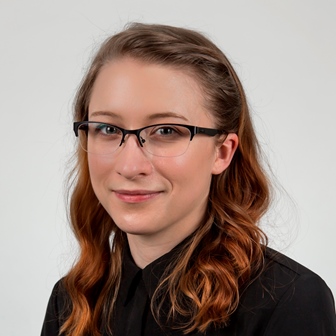With burnout on the rise, developing solutions for physicians that promote efficiency, transparency, and accessibility is paramount. The Hackensack Meridian Health versatile and comprehensive physician-tailored app, called Maestro, is one such solution—and one that has been incredibly well-received, by 100 percent of physicians in the pilot and 87 percent of the physicians across eight hospitals.
Jim Blazar, Executive Vice President and Chief Strategy Officer, Hackensack Meridian Health, and John Simpson, President and Co-Founder, Digital Health Strategies, offer some insights into the app and the planning and implementation that led to its successful reception.
Q: Why do you think effective physician communication is a critical issue for healthcare marketers?
Blazar: Physicians are essential to a health system’s success in delivering care that is high-quality, affordable, and accessible. Hospitals and physicians shouldn’t be living in silos—we need to work closely together. We think Maestro is a great engagement tool to help facilitate that. We’ve been working on it for about a year and a half, and physicians have been using it for six months. Everything in advance of that was research, development, and listening to physicians so they could tell us about their pain points in delivering care.
Simpson: Doctors and clinicians are on the front line of patient care. They interact with and deliver care to patients every day, all while understanding the organization’s priorities and protocols. Physicians make up a massive audience, and hospital and health system leaders need to ensure they are receiving information in a clear way.
Q: What hurdles was Hackensack Meridian Health trying to overcome in physician engagement?
Blazar: Through our focus groups with physicians, we discovered that the cath labs at Hackensack Meridian Health University Medical Center and Jersey Shore University Medical Center were experiencing delays that caused physicians to waste a lot of time. With Maestro, they now have access to a flight tracker that informs them of delays so they don’t have to travel to the campus before they’re actually needed. This ultimately allows physicians to engage with and see more patients.
It was more than just creating the app, though. We learned through the physicians why delays were happening. We now have plans to repurpose rooms and create a mobile cath lab to increase capacity in the next few months, both of which will promote more efficiency and time with patients. The physicians are really pleased, and I believe it is because Maestro allowed us to document the problem, see trends in schedules, and come up with a solution.
Simpson: All humans experience information overload, but doctors feel it more acutely. They receive a lot of emails and newsletters that they just don’t have time to look at. The team at Hackensack Meridian Health asked: How can we cut down on the amount of communications physicians receive so that they can pay attention to what’s really important? They needed to be able to prove to physicians that the communications had value, which was a big hurdle. And, because Hackensack Meridian Health is growing, they needed a solution that could scale across thousands of doctors but still feel personalized.
Q: How has the digital platform helped overcome those hurdles?
Blazar: The technology itself is not the solution—it enables the solution. The process of how the platform is rolled out is important. It combines top-down and bottom-up engagement. We sit down with physician leadership to gain a better understanding of what the design should look like and what the user experience should be. We ask: What are the main challenges and problems you have that need to be solved? What does your day and workflow look like, and how can we improve those? All of that input is critical to informing the solution.
We have segmented doctors by location, specialty, and subspecialty. There are mechanisms for them to further personalize the app. We have a dedicated email address that doctors can use for an easy way to give feedback on the app and ask specific questions. Allocating time to get input is important. This is a living, breathing platform. It isn’t a one-size-fits-all solution.
Q: What do you see as the future for Maestro, and for physician engagement overall?
Blazar: We are at the beginning of this journey, and we will never be done. We want to keep listening and putting things that are valuable in Maestro. The doctors like it, and you don’t hear that very often. The most important thing is to listen to them, then design and create content to meet those needs. By doing that, we’re gaining credibility for some of the communications they want. They don’t want to read and hear everything. They want to take care of more patients with more efficiency and more effective time allowance.
For example, they have told us they want the ability to share X-rays with primary care physicians so there is better communication between providers. There’s also talk about how we could use Maestro to partner with care managers so they can communicate directly with the patient, then use the app to discuss with the physician any treatment changes or plans. These kinds of things could all be done through Maestro’s secure messaging and image-sharing capabilities.
Simpson: Communicating in a targeted way, tracking delivery of care, and following protocols—those things won’t change. But in the future, interactivity will become part of care delivery. There will be more use of video, remote care, and virtual collaboration. Those modes will continue to be more valuable for physician engagement because they make it easier for providers to collaborate across a network. If a physician can engage with a pediatric oncologist specialist 500 miles away—show them the patient, lab results, and imaging in real time—that has tremendous value. Tools such as Maestro will help with this need and become a differentiator.
Learn more! Discover what other organizations are doing to meet the demands in physician engagement. Order the 2019 Healthcare Marketing & Physician Strategies Summit Playback.
Exclusive benefit for Forum Members: View Jim Blazar’s and John Simpson’s presentation, A Physician Engagement Success Story, from the 2019 Healthcare Marketing & Physician Strategies Summit.
This post was developed in partnership with True North Custom, the official content partner for the 2019 Healthcare Marketing & Physician Strategies Summit.

Sarah Fredriksson is a Managing Editor for True North Custom, a healthcare marketing agency based in Chattanooga, TN, that specializes in content strategies that build brand, drive consumer and referral revenues, and optimize marketing technology outcomes.


